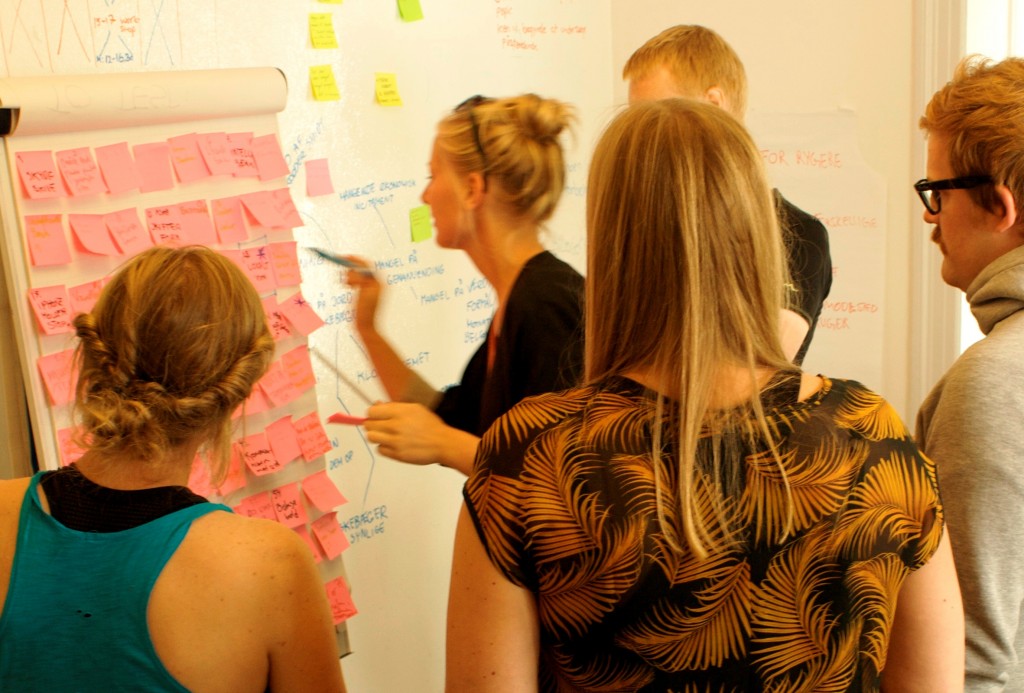The objective of this exercise is to create a secure brainstorming space and is therefore ideal for kicking off a development process. The focus is to develop bad ideas and find out if there is any potential for converting them into good ones.

Method GOOD IDEAS vs. BAD IDEAS
Add to my favourites

Instructions
Start by explaining the rules for brainstorming (Source: D.School, Stanford University).
- Defer Judgement – Don’t judge your own ideas or those of others
- Go for volume – 100 better than 10
- One conversation at a time – focus
- Encourage wild ideas – the crazier the better
- Build on the ideas of others – leverage perspectives
- Stay on topic – stick to the “how” problem
- Be visual – communicate your ideas for teammates by sketching
- Thereafter, divide the students into groups and explain that they have 5 minutes to come up with as many bad ideas as possible. We recommend providing an example of a bad idea. While ideas should relate to the course’s subject area content, all bad ideas are welcome!
- Afterwards, the groups have 5 minutes to choose their worst idea (eg., through Dot Voting). They discuss why it is the worst idea and write the idea on a piece of paper/Post-it.
- Each group quickly presents their worst idea in plenum. This is so that everyone can hear the worst ideas, and they are often quite entertaining. Afterwards, each group gives their worst idea to another group. All groups are then in possession of a piece of paper/Post-it with another group’s worst idea written on it.
- Groups are then given 5-10 minutes to transform the bad idea into a good one and to prepare a presentation of this idea in plenum.
- The groups present their good ideas for max. 5 minutes.
- In turn, the groups get 5 minutes to reflect on the exercise and what this exercise tells us about good and bad ideas.
- The groups then discuss in plenum what they have discovered and what advice they would give for the further idea development processes.
Worth Considering
Some brainstorming fundamentals:
- Individuals are better at generating ideas than groups (Girotra et al., 2009)
- Groups are better at selecting the best ideas (Singh & Flemming, 2009), which can be related to “wisdom of the crowds” (Surowiecki, 2004)
- Individuals are significantly worse at selecting their own creative ideas (Faure, 2004; Putnam & Paulus, in press; Rietzschel, Nijstad & Stroebe, 2006)
Preparation
Preparation is not required, but be sure to come equipped with Posts-its/paper, markers and flipcharts.
Sources
De Bono, E. (1971). The use of lateral thinking. Jonathan Cape.
Osborn, A. F. (1953). Applied imagination.
